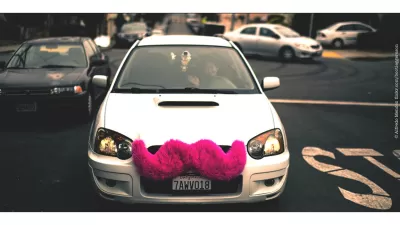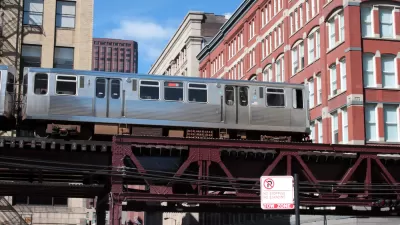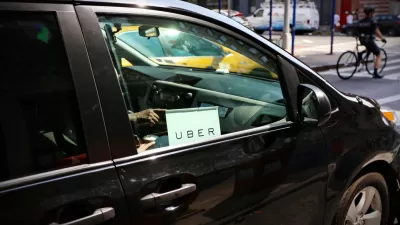According to a new report from the Center for American Progress, technology network companies like Uber and Lyft offer a unique opportunity for low-income users to connect with transit routes and on to greater economic opportunities.

Kevin DeGood, director of infrastructure policy at the Center for American Progress, and Andrew Schwartz, research associate on economic policy at the Center, have written a report exploring the potential of transportation network companies (TNCs) to provide social equity with access to mobility and all the opportunities that entails.
After establishing distance as the greatest barrier to access, DeGood and Schwartz note that TNCs "offer transit agencies the opportunity to experiment with different ways to overcome the last-mile barriers to connect people with the public transit system." The report that follows builds a case to subsidize the use of TNCs like Uber and Lyft for low-income users.
Historically, transit agencies have been unable to address these geographic gaps—especially because extending traditional fixed-route service into neighborhoods is cost prohibitive. Companies such as Uber and Lyft offer transit agencies a way to bridge last-mile gaps efficiently, allowing eligible residents to connect affordably to the public system.
The article describes the unique ability of the Technology platforms of TNCs to make subsidized connections to transit a reality before considering the Metropolitan Atlanta Rapid Transit Authority (MARTA) in the Atlanta region as a theoretical test case.
Angie Schmitt also picked up on the news of the report for Streetsblog USA. Schmitt concludes that it's "interesting to see some analysis of how ride-hail-to-transit subsidies for commuters might work, [but] it’s still hard to discern a concrete benefit compared to plain old bus and train service."
FULL STORY: Can New Transportation Technologies Improve Equity and Access to Opportunity?

Study: Maui’s Plan to Convert Vacation Rentals to Long-Term Housing Could Cause Nearly $1 Billion Economic Loss
The plan would reduce visitor accommodation by 25,% resulting in 1,900 jobs lost.

North Texas Transit Leaders Tout Benefits of TOD for Growing Region
At a summit focused on transit-oriented development, policymakers discussed how North Texas’ expanded light rail system can serve as a tool for economic growth.

Why Should We Subsidize Public Transportation?
Many public transit agencies face financial stress due to rising costs, declining fare revenue, and declining subsidies. Transit advocates must provide a strong business case for increasing public transit funding.

How to Make US Trains Faster
Changes to boarding platforms and a switch to electric trains could improve U.S. passenger rail service without the added cost of high-speed rail.

Columbia’s Revitalized ‘Loop’ Is a Hub for Local Entrepreneurs
A focus on small businesses is helping a commercial corridor in Columbia, Missouri thrive.

Invasive Insect Threatens Minnesota’s Ash Forests
The Emerald Ash Borer is a rapidly spreading invasive pest threatening Minnesota’s ash trees, and homeowners are encouraged to plant diverse replacement species, avoid moving ash firewood, and monitor for signs of infestation.
Urban Design for Planners 1: Software Tools
This six-course series explores essential urban design concepts using open source software and equips planners with the tools they need to participate fully in the urban design process.
Planning for Universal Design
Learn the tools for implementing Universal Design in planning regulations.
City of Santa Clarita
Ascent Environmental
Institute for Housing and Urban Development Studies (IHS)
City of Grandview
Harvard GSD Executive Education
Toledo-Lucas County Plan Commissions
Salt Lake City
NYU Wagner Graduate School of Public Service





























